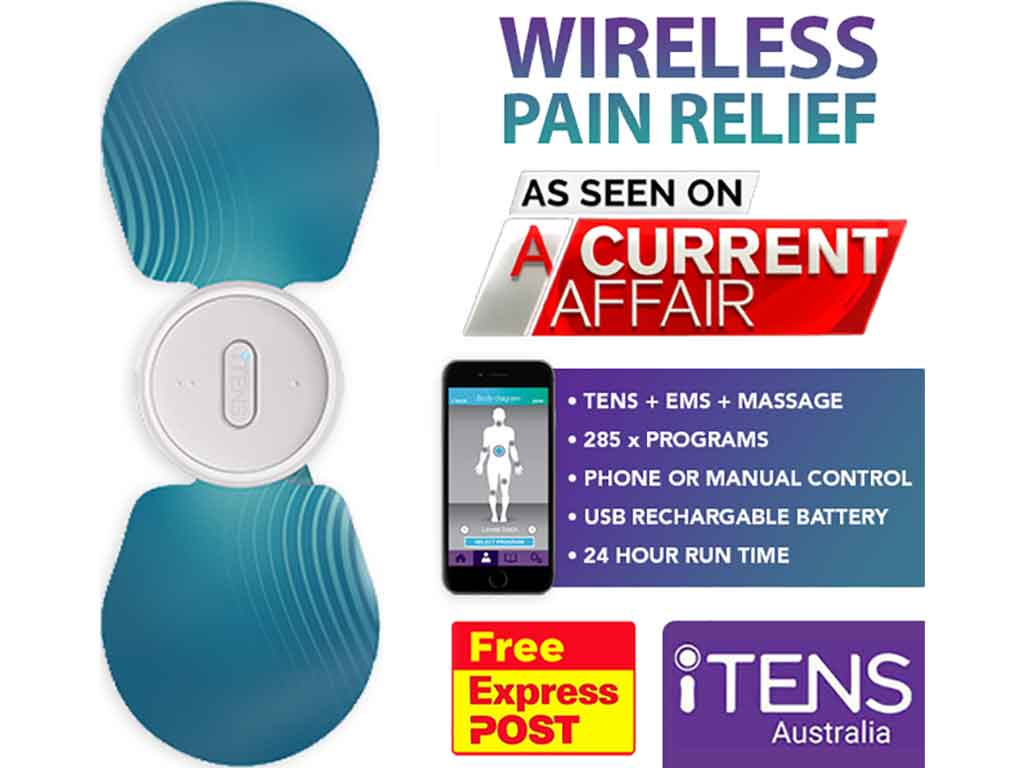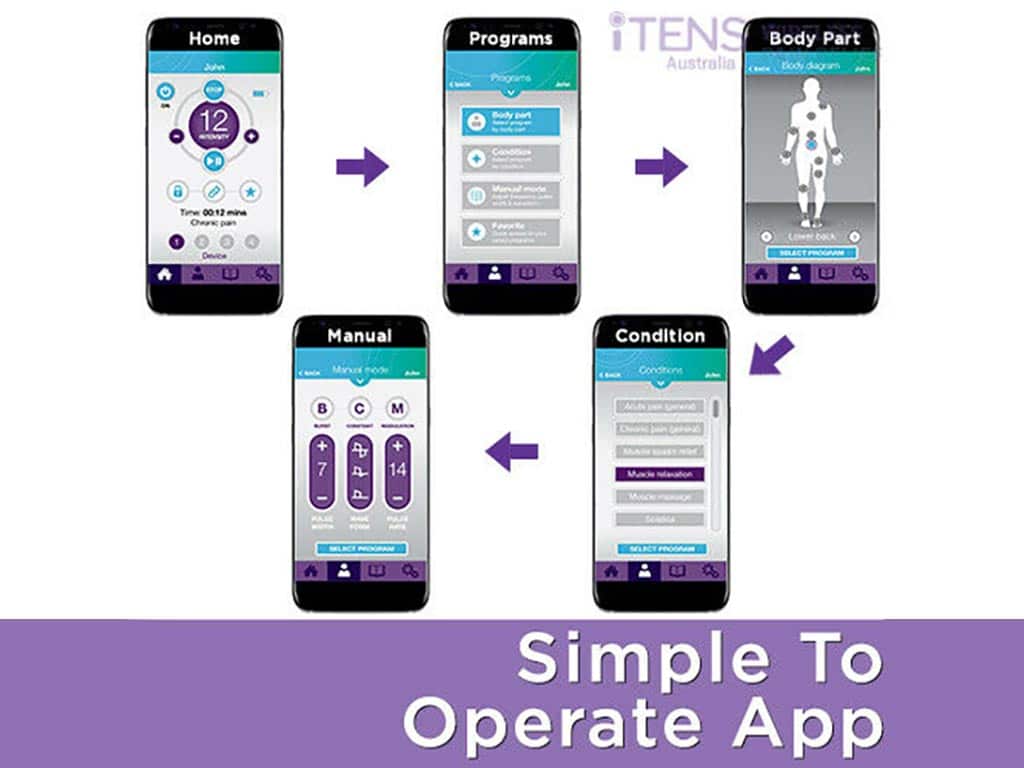
Upper back pain can be debilitating and affect daily activities. Fortunately, Transcutaneous Electrical Nerve Stimulation (TENS) is an effective pain management method for many acute and chronic conditions. A TENS machine for upper back pain uses electrodes to deliver electrical stimulation to the body. This can trigger a pain-gating mechanism to block pain signals or a release of endorphins to provide relief. To use one, the user must place pads on either side of the back and adjust the settings.
There are many possible causes of upper back pain. This includes injuries like sprains and strains. Conditions like fibromyalgia and arthritis are also possible reasons. Although many turn to pain medicines, these can have many adverse effects. An advantage of TENS is that it causes minimal risks to the user. However, consulting a medical professional before using one is recommended. This article will present how TENS works, how to use one, and some safety considerations.
How a TENS Machine for Upper Back Pain Works
A TENS machine for upper back pain uses low-voltage electrical currents to trigger the body to alleviate aches. Often, upper back pain results from injuries like strains, sprains, fractures, and herniated disks. It can also stem from conditions like fibromyalgia or arthritis. Fortunately, TENS provides versatile acute and chronic pain relief.
People can adjust the settings of a TENS unit depending on their condition and comfort level. Using high-frequency stimulation triggers the Pain Gating mechanism suggested in the Gate Control Theory of Pain. During this, spinal nerve cells block pain signals from reaching the brain. It takes effect immediately, making it suitable for acute pain conditions.
Meanwhile, low-frequency stimulation triggers endorphin release. These hormones are natural painkillers that build up and reduce the sensation of pain. Many use it for chronic pain conditions because the effects can last hours after the session. In addition, endorphins can help improve moods and reduce stress. Overall, using TENS devices can improve overall quality of life.
Advantages of Using the Device
- Non-invasive: does not require invasive procedures like incisions or surgery.
- Drug-free: no intake of medicine is needed to use TENS. On the contrary, many use it to reduce or replace their intake of pain medications. This allows them to avoid the side effects of medicine, which include nausea, stomach bleeding, and headaches.
- Portable: many units come in compact designs. This enables the individual to use it in various locations.
- Safe: TENS is safe for most people with very minimal side effects for some.
- Complementary: many use TENS with other treatment methods, like physical exercise.

How to Use a TENS Machine for Upper Back Pain
Using a TENS machine for upper back pain is a simple process. To ensure safe use, the individual may read the instruction manual from the device manufacturer. In addition, they may consult their healthcare provider for advice on how to use the device for their condition.
Before starting, clean the area with soap and water. Then, apply the electrode pads on dry skin. Once the pads are secure, they may turn the machine on. It is best to start on low settings to avoid sudden electric shocks or discomfort. Then, they can gradually increase the settings or select a preset mode to alleviate their aches.
Generally, TENS sessions last around 20-30 minutes. This depends on the settings used and the overall health condition. They may set a session timer to ensure the user does not exceed the limit. Once the time has elapsed, they may turn the machine off. Afterwards, they can remove the adhesive electrodes and store them for future use.
Pad Placement Guide
Proper electrode placement is crucial for sending electrical impulses to the body. To ensure correct placement, people refer to placement charts and guides. For upper back pain, the individual may place the electrode pads on either side of the back, parallel to the source. They may also attach it on both sides if the pain is widespread.
However, it is crucial to avoid the spinal cord. It is a sensitive area that may react negatively to electrical stimulation. Also, keep the adhesives away from the throat and head. The last piece of advice about electrode pad application is to avoid irritated, infected, or broken skin.

Safety Considerations for Using a TENS Machine for Upper Back Pain
The foremost safety consideration for using a TENS machine for upper back pain is to consult a medical professional. They may assess if the condition suits TENS therapy. In addition, they may diagnose if there is any underlying medical condition that may be negatively impacted by electrotherapy.
Generally, those with a history of cancer, heart disease, seizures, and epilepsy should refrain from using TENS. The same is true for pregnant women, but they may check with their doctor if they can use TENS for labour pain. Moreover, those with electrical and metal implants, like pacemakers and defibrillators, should also avoid electrotherapy devices. This is because the electric current from TENS may cause the implants to malfunction.
Furthermore, users must stay alert during the session. Avoid sleeping or doing safety-sensitive activities that require concentration. Examples of such activities include driving and operating heavy machinery. Moreover, avoid contact with water. This is because it may cause electrical shock during the session. Lastly, refrain from misusing the machine. This can cause adverse effects like skin irritation and muscle spasms.
When to See a Doctor
TENS is generally safe to use for many people. However, it is crucial to seek medical help in certain instances. TENS therapy should not cause worse pain during or after the session. Thus, if this occurs, it is a possible sign of an underlying condition. This requires medical attention to diagnose and treat.
Furthermore, some people experience a tingling sensation and muscle twitching while using high-frequency stimulation. In many cases, this is mild and stops after some time. However, it is best to see a doctor if those effects are persistent and excessive to ensure safety.
Conclusion
Many can benefit by using a TENS machine for upper back pain. It is a non-invasive and drug-free method of getting short-term pain relief. It works on multiple causes of upper back pain, such as herniated disks, arthritis, and fibromyalgia. TENS also helps relieve aches from a wide range of conditions. Furthermore, people may use TENS units at home without medical supervision. It starts with placing the electrode near the pain source and then adjusting the settings accordingly.
TENS complements many physical therapy treatments. However, it is crucial to consult a doctor or physical therapist before using one. They may ensure that TENS is safe for the condition and advise on how to use it. Moreover, if the user experiences any adverse effects, they should stop the session. Some instances where people should seek medical help are if they feel worsening aches during the session and if they experience excessive muscle twitching.







